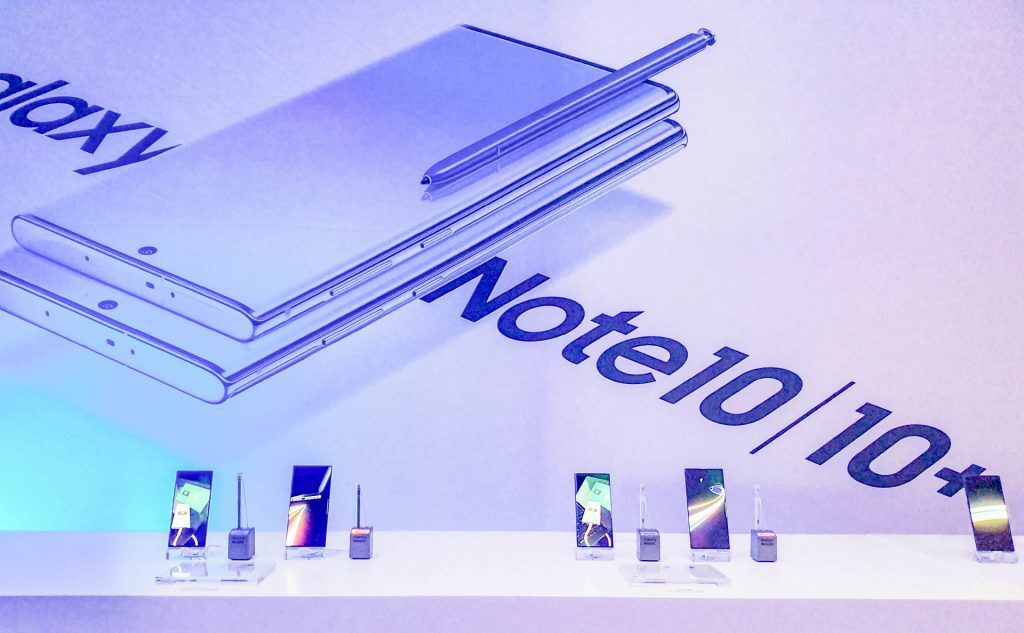As is usually the case, Samsung wasn’t able to keep the pertinent bits of its new Note devices secret until the official event kicked off. A leak of marketing materials yesterday pretty much covered all of the key bases, but now that the official #Unpacked event is underway, we know the answers to some of our lingering questions. Here are the things you need to know about the Galaxy Note 10 and the larger Note 10+.
Two for the show
As expected, there are two Note devices for 2019. The regular Note, with its 6.3in display, is a smidgen larger than the Galaxy S10+. Meanwhile, the Note 10+ packs a huge 6.8in display, which is 0.4in larger than the Note 9’s. Thanks to ever slimmer bezels, though, the 10+ doesn’t feel that much larger than the 9.
Both the regular and plus-sized Notes will come with 256GB of storage, but the 10+ will offer 12GB of RAM compared to the regular edition’s 8GB. Still, 8GB of RAM is the same as the default allocation in a 13in MacBook Pro, so it’ll hardly be underpowered. The larger version also gets a microSD card slot that’ll support up to 1TB cards. There are 512GB versions of the Note 10/10+ listed on Samsung’s global website, but it seems these won’t be coming to SA.
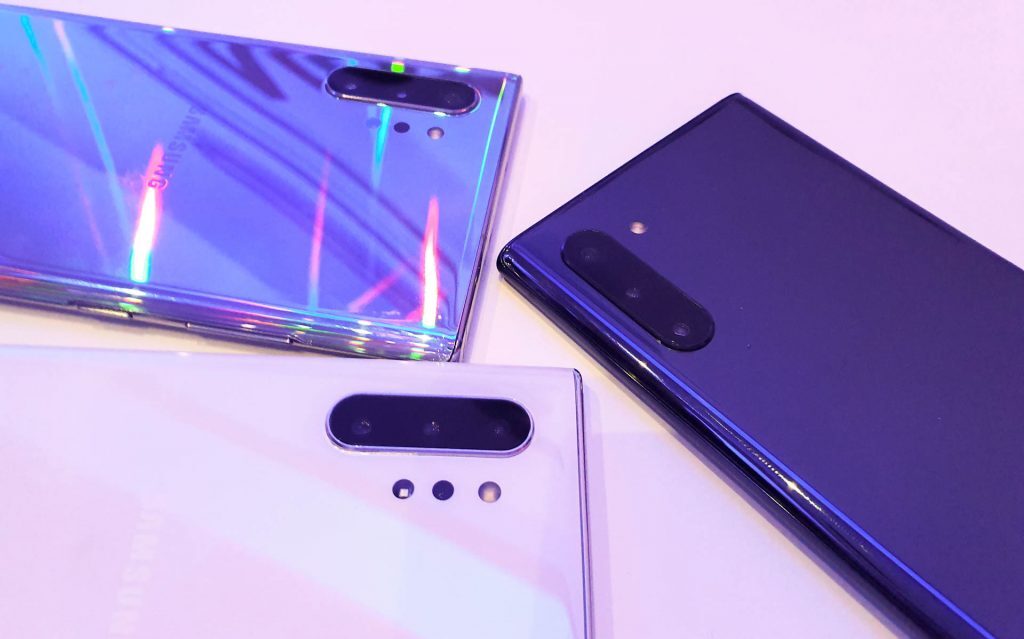 Both of the new Notes get three cameras on the rear, arranged one below the other, but the 10+ also gets a fourth, time-of-flight (TOF) camera for depth detection (which should make it slightly better at applying bokeh-like effects to stills and video than its smaller sibling).
Both of the new Notes get three cameras on the rear, arranged one below the other, but the 10+ also gets a fourth, time-of-flight (TOF) camera for depth detection (which should make it slightly better at applying bokeh-like effects to stills and video than its smaller sibling).
Understandably, given their respective dimensions, there’s a difference in battery capacity, too. And the screens offer slightly different resolutions. The Note 10 gets a 3,500mAh battery and a FHD+ (2,220 x 1,080 pixels) screen, while the 10+ packs a 4,300mAh battery and a WQHD+ (2,560 × 1,440) display. On paper, those cells should get each handset through a full day with something left in the tank, but we’ll have to wait until we’ve actually tested the devices to confirm that — those displays are going to be thirsty.
Sharp shooters
Curiously, while Samsung’s eschewed the off-to-the-side punch-hole selfie cams of the S10 range for the Note 10, and instead stuck the (now-single-only) snapper dead centre in the display, it’s moved the rear camera setup from the centre of the devices to the right-hand edge. ¯_(ツ)_/¯
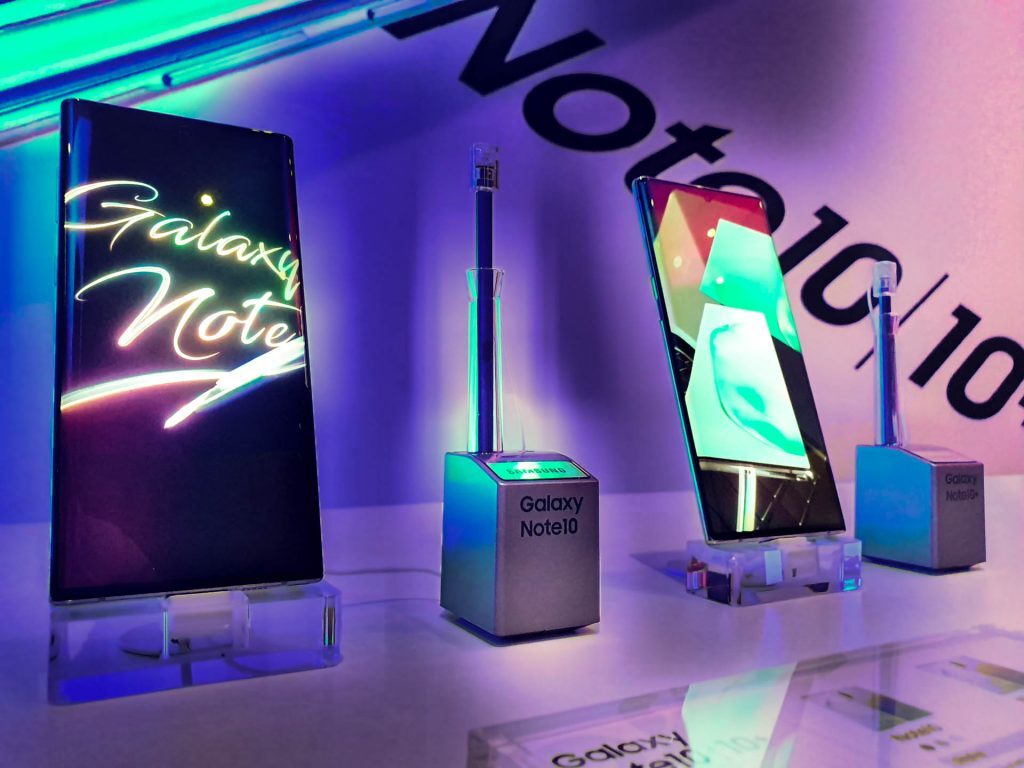 Up front, both Notes get a 10MP f2.2 shooter, and around the back a triple setup: an ultra-wide (16MP, f2.2), a wide-angle (12MP, f1.5 and f2.4), and a 2x telephoto (12MP, f2.1). As mentioned above, there’s also a TOF cam on the rear of the 10+.
Up front, both Notes get a 10MP f2.2 shooter, and around the back a triple setup: an ultra-wide (16MP, f2.2), a wide-angle (12MP, f1.5 and f2.4), and a 2x telephoto (12MP, f2.1). As mentioned above, there’s also a TOF cam on the rear of the 10+.
Both sizes of handset also get three microphones: one top, one bottom and a rear one along the edge of the camera unit. The purpose of these is to allow for one of the Note’s new features: audio zoom. When enabled, zooming while shooting video will shift precedence from the top and bottom cameras to the rear ones as the user zooms, increasing the volume accordingly. We’ll see both how well this works and how useful it is once we get our mitts on a review unit.
Action from the S Pen section
Another new feature of the Note 10 range is called ‘Air Actions’. Users can use the S Pen as a wireless remote to switch between camera modes, zoom, and shoot, all from a distance of up to 40m. That’s four times the range of the Note 9’s S Pen, and unlike its predecessor which relied on a super-capacitor to allow up to a couple of hours of use, the Note 10 S Pen has its own batteries. It’ll take six minutes to get a full charge from the handset when flat, and is rated for up to 11 hours of use.
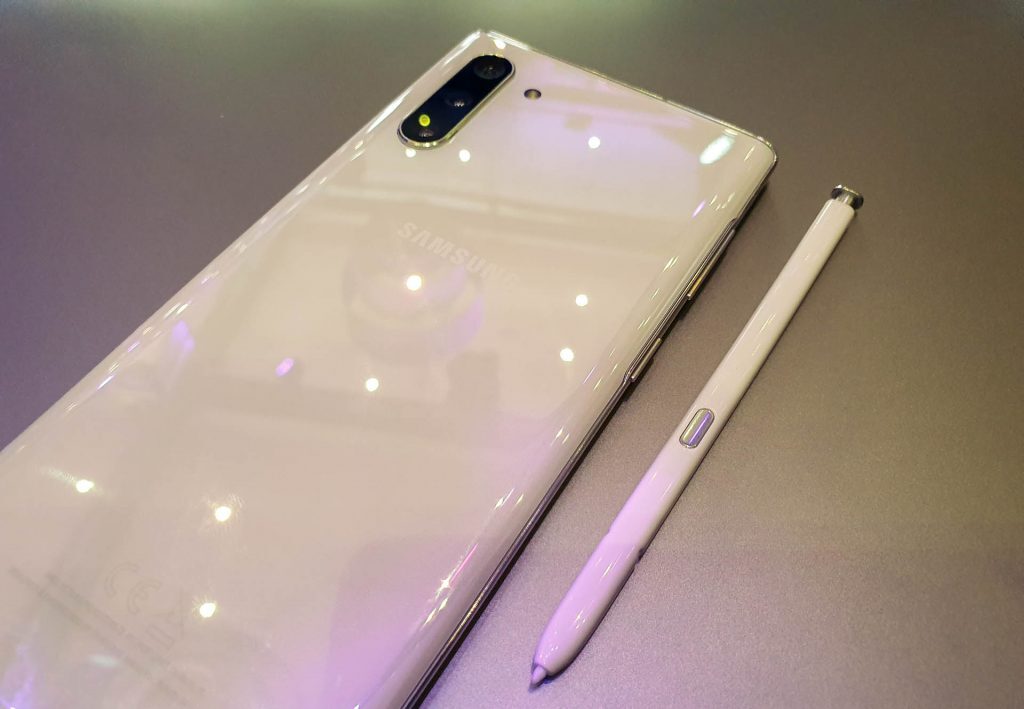 Air Actions aren’t just limited to the camera mode, they can also be used to control YouTube, Spotify or other third-party apps. So one could, for example, change tracks or adjust volume on the Note 10 from afar. We imagine the camera functionality will be the most appealing and functional, especially for vloggers, or other folk who to use the handset to create content solo.
Air Actions aren’t just limited to the camera mode, they can also be used to control YouTube, Spotify or other third-party apps. So one could, for example, change tracks or adjust volume on the Note 10 from afar. We imagine the camera functionality will be the most appealing and functional, especially for vloggers, or other folk who to use the handset to create content solo.
The S Pen’s other new trick is AR Doodles. Think Snapchat filters that map to your face, except you draw them yourself. Impressively (or ridiculously), get multiple people to pose and doodle moustaches, hats or monocles onto their own mugs and you can then all pose for a selfie or video and each of your doodled additions will map to your respective mugs.
Look ma, I’m on TV!
Content creators are definitely getting special attention from Samsung this time around. Samsung’s upped the features of its built-in video editing to allow for multiple clips, trimming, transitions and other basic edits. It’s also partnered with Adobe to allow Note 10 users to test-drive Adobe’s mobile edit suite, Rush. Users will be able to create up to three full projects in Adobe Rush for free, after which they’ll need to pay for it.
There’s also support for HDR 10+ support built-in, so created content or existing HDR 10+ media should all look superb on the Note 10’s Dynamic AMOLED display. And Samsung’s ‘Super Steady’ on-board video stabilisation introduced with the S9 can now be toggled with an on-screen button in the camera viewfinder view, rather than having to dig into the menus and flip a switch. From the demos we’ve seen, Samsung’s really making a case for using the Note 10 as an action cam if you only shoot that sort of thing occasionally, rather than committing to a GoPro Hero or DJI Osmo product.
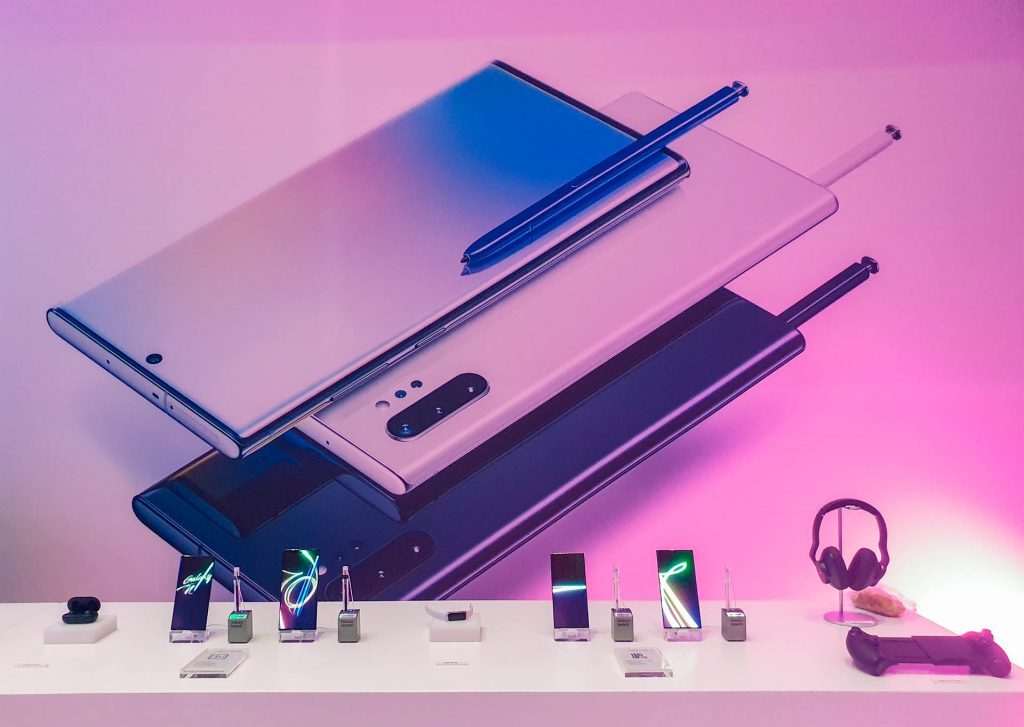 Sadly, though, when it comes to checking the audio of your cinematic creations you’ll have to rely on the handset’s speakers, or Bluetooth headphones — as the rumours suggested, despite holding out for longer than expected, Samsung’s finally joined the 3.5mm-killing fold. Even more sadly, there’s no dongle in the box… though the included AKG earbuds are now USB-C.
Sadly, though, when it comes to checking the audio of your cinematic creations you’ll have to rely on the handset’s speakers, or Bluetooth headphones — as the rumours suggested, despite holding out for longer than expected, Samsung’s finally joined the 3.5mm-killing fold. Even more sadly, there’s no dongle in the box… though the included AKG earbuds are now USB-C.
Plug and play… or work
With the S8, Samsung introduced DeX, it’s phone-as-computer solution that lets you connect a handset to peripherals like a keyboard, mouse and screen and use it as a desktop. To date it’s always been a little clunky, requiring a DeX Dock and said peripherals. For the Note 10, DeX has had a revamp. Now it’s more about working with your computer than replacing it, and using it is as simple as plugging it into your PC or Mac with the same cable you get in the box.
Once the accompanying DeX software is installed on your computer, plugging in the Note 10 will open it and you’ll have almost full access to the phone in a window on your device. That makes it super simple to get content onto or off the phone, but it also means you can run apps on the phone and enjoy the benefits of a full-sized keyboard and mouse/trackpad. We’re particularly excited about being able to drag edited photos from our desktop to the phone and then post them to social media (ahem, Instagram) without ever needing to pick up the phone.
Game hard, power-up fast
Samsung’s Game Booster mode that ramps up performance is back. This time around, of course, it’s got an even more potent processor to play with: Samsung’s updated Exynos 9825. Add the 8GB or 12GB of RAM and a liquid cooling chamber to the mix and you’ve got the ultimate pocketable Fortnite machine.
And when it comes time to recharge (yourself, or the phone), there’s a 25W charging block in the box, and the 10+ supports charging up to 45W, though you’ll need to buy a 45W charger separately. Do so and you can look forward to 50-60% charge in 30 minutes.
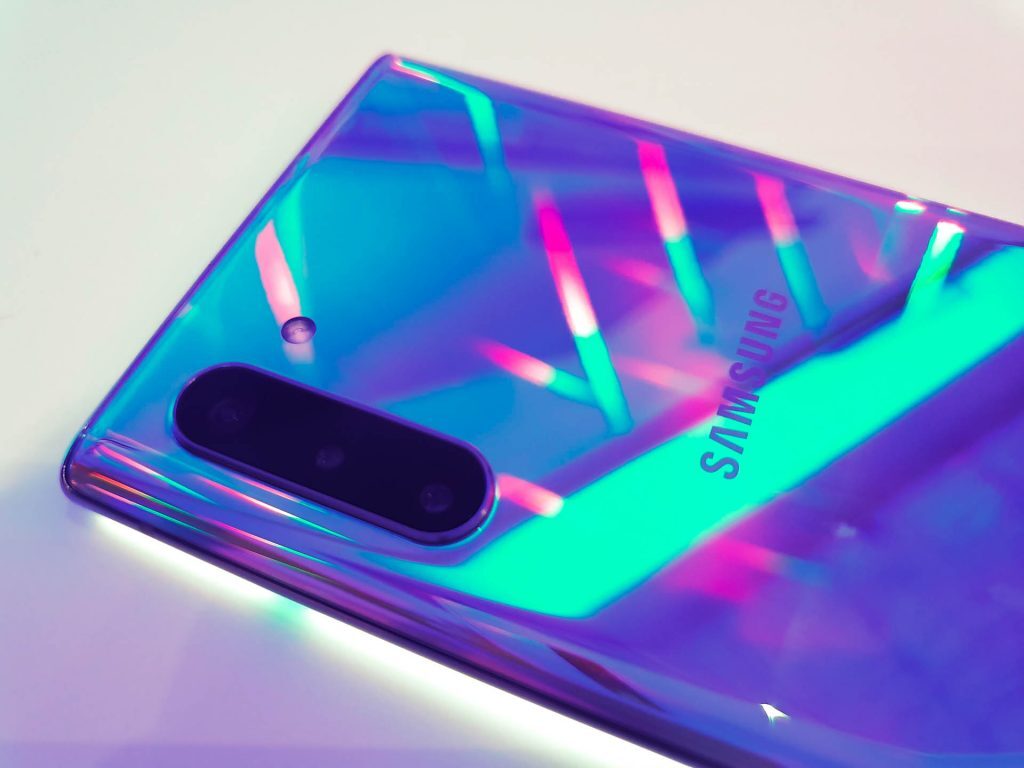 Colourwise, Samsung’s keeping things relatively conservative. Aside from white or black finishes, there’s the new ‘Aurora Glow’, which is really just a mirror finish the reflects whatever light it’s in, and not the unicorn-hide look (of the sort seen on Huawei’s P30 Pro) that it appears to be in promotional images.
Colourwise, Samsung’s keeping things relatively conservative. Aside from white or black finishes, there’s the new ‘Aurora Glow’, which is really just a mirror finish the reflects whatever light it’s in, and not the unicorn-hide look (of the sort seen on Huawei’s P30 Pro) that it appears to be in promotional images.
The only real physical change — and many people won’t notice — is that all controls have been moved to the left-hand edge of the phone. There’s no power button on the right anymore and, in fact, there’s no power button at all. Instead, there’s a Bixby button (which can be remapped as an app shortcut) and a volume rocker. To access the power menu, users can use the new power icon in the swipe-down shortcuts tray or can press and hold the volume down and Bixby buttons.
The price of admission
The Note 10 and 10+ will arrive in South Africa at the end of August 2019, and recommended pricing is R19,000 for the Note 10, and R23,000 for the 10+. That’s roughly what we were expecting, given the specifications and the cost of previous Note devices. Pre-orders open tomorrow, and the devices will arrive on 30 August. Customers who pre-order will get them sometime in the week before that, and it’ll come with the Galaxy Active Fit band thrown in for free.
We’ll have a detailed review up once we’ve had the chance to properly put the Note 10 to the test. For now, we’re off to draw silly eyebrows on pics of our colleagues.

